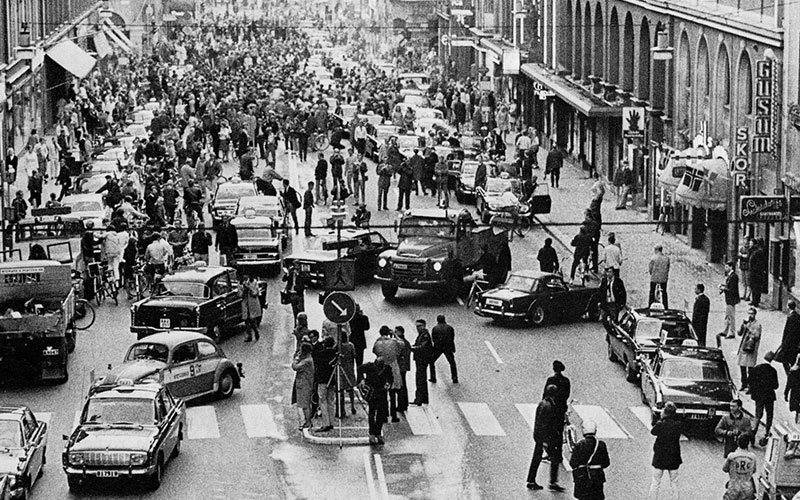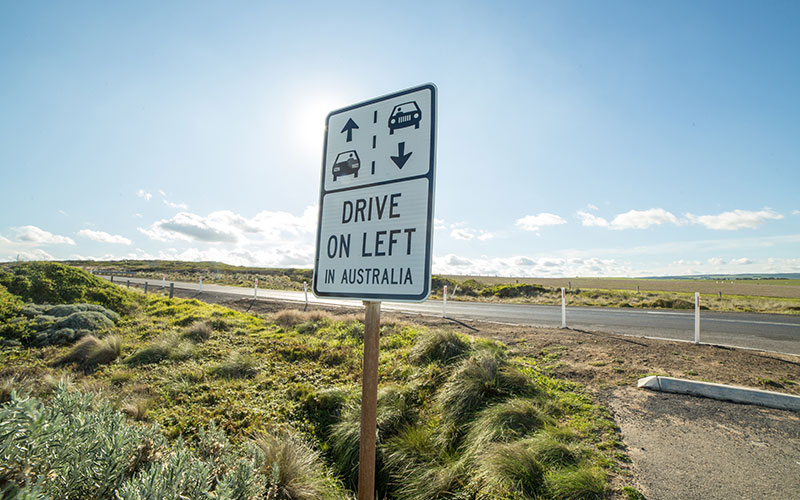Driving on the Left vs Right Side of the Road
157 countries drive on the right side of the road. What countries drive on the left of the road? Over 75 of them. Find out which ones, and why!
What Countries Drive on the Left Side of the Road?

Anyone who has visited multiple countries, or watched a James Bond movie, has seen that certain countries drive on the left side of the road while others drive on the right side of the road. Driving in a different country and seeing a MINI coming at you on the opposite side than you’re used to can be unnerving. So, which side is the ‘correct’ side?
Most countries, 163 countries to be exact, drive on the right-hand side of the road. Brazil, Egypt, Iraq, Spain, the U.S., and Vietnam are a handful of those countries. Meanwhile, some 75+ countries drive on the left-hand side of the road. Australia, Indonesia, Ireland, Kenya, Tanzania, and the U.K. are some of those countries. How did this divide come to be? Which was first? The left or the right? There is an interesting history here and some of the originators of left-handed driving may surprise you.
Which Came First?

Record-keeping on this topic wasn’t exactly top-notch centuries ago, but there is archaeological evidence available that suggests the ancient Romans may have driven their carts and chariots on the left of the road. That method continued on to other surrounding areas. There’s a theory that this practice originated, in part, because the majority of the population then were right-handed, just like the majority of people today are. Being right-handed, they were better able to draw their sword or weapon if they were on driving on the left side of the road.
Of course, in the 1700s, there weren’t a lot of horse and wagon traffic jams, so people could choose to drive wherever they wanted. Left-handed steering eventually became law in Britain after legislation in 1773 and 1835. France took the opposite stance, choosing the right side of the road. As these two countries expanded and colonized other areas, they brought their respective driving styles with them.
An Influential General

Napoléon Bonaparte was an influential general in more ways than one. Since he was left-handed, he was more comfortable on the right side of the road. As a left hander, riding over there made it easier for him to draw his sword. As he conquered other European countries, like Germany, Switzerland, and Poland, Napoléon brought the right-handed driving with him. Not only that, he enforced it! As Britain resisted Napoléon advances, they also resisted the idea of right-handed driving. Czechoslovakia (now the Czech Republic) resisted the idea of driving on the right-hand side of the road, too. The country switched over once they were annexed by Germany during World War I, however. You can learn more about Czechoslovakia’s car history by reading about the Czechoslovakian Tatra 77 in our article on ‘Car Aerodynamics.’
A New Country with New Ideas

The United States is one of the countries that drives on the right side of the road. The steering wheel is on the left side of the vehicle and the car is driven on the right side of the road. There are reasons for that. Early on, however, people rode, or drove, on the left side of the road in the U.S. as well. In 1792, 1804, and 1813, Pennsylvania, New York, and New Jersey led the switch to the right side of the road. Settlers in those days bucked British tradition and chose to drive on the right side of the road because of the horses. They were handling several horses at the same time, not just one. They needed their dominant hand (usually the right hand) to control the horses and steer. With a group of horses, the drivers sat on the left side of the wagon, near the center of the road, so they could avoid crashing into oncoming traffic.
The Impact of the Model T

Another influencer on the left versus right side of the road debate was Henry Ford. When he developed the Model T in the early 1900s, it caught the attention of other countries. Everyone wanted a Model T. The Model T was set up with the steering wheel on the left so that a driver could drive on the right side of the road. The desire to have a Model T caused some regions and countries, like Canada, to reconsider their driving habits. Many parts of Canada switched over to the right-handed driving style because, in order to drive a Model T, they needed to. Learn more about the Model T by reading ‘How to Drive a Model T,’ which examines some of the weird quirks that went into starting and driving the iconic vehicle. You can also test your Ford knowledge by reading ‘10 Weird Facts You Didn’t Know About Ford.’
Switching Sides

The United States and Canada aren’t the only countries to make the switch. With so many neighboring countries already driving on the right side of the road, Sweden made the switch in September 1967. That switch was a hard sell to the people of Sweden, though. Many Swedish citizens didn’t want to make this switch to the right, but they were already driving left-hand vehicles imported from the U.S. It’s not uncommon to find classics, like the Ford Thunderbird, Ford Mustang, and Chevrolet El Camino, on Swedish streets still today.
The day Sweden switched over from the left to the right was a day known as “Dagehn H Day.” The “H” stands for “Högertrafik,” which translates to “right-hand traffic.” Driving left-handed vehicles on the left side of the road caused a lot of confusion, so, after that public persuasion campaign, the reluctant switch to the right side of the road was made permanent.

That is, of course, just one story from one country that switched. Several others have changed sides, one way or the other, in recent years. Samoa, a former colony of Germany, switched from the right side of the road to the left in September 2009. The reason, again, has to do with the cars they drive. They import from Australia and New Zealand, both of which drive on the left side of the road. In order to import those vehicles and lessen traffic issues, they conformed to Australia and New Zealand’s way of driving.
The most recent country before that to switch was the former nation of South Yemen. In January 1977, South Yemen transitioned from driving on the left side of the road to the right side of the road. The traffic laws exist, but aren’t always enforced, so you may run into both instances there!
Making the Transition

If you think all this talk of switching sides of the road is confusing to read about, try switching as you’re driving, traveling into a bordering country. Most people don’t have to worry about that. Japan, Britain, and Australia all drive on the left side of the road, but they are all islands. There’s no transition to worry about when getting to the border. Some countries do have that issue though. Thailand, for example, is one of them.
People in Thailand drive the popular Toyota Hilux and Nissan Almera models on the left side of the road, but the country is surrounded by Cambodia, Laos, and Myanmar. All three of those countries drive on the right. Most of those high-traffic borders have a traffic light and oval-shaped road design in place to control the flow of traffic and make the transition from one side of the road to the other.
Future Changes?

As Sweden, South Yemen, Nigeria, Samoa, and others have proven, switching from one side of the road to the other is very doable. Realistically, I’m not sure a larger country like Japan, the United States, Britain, Mexico, or Australia would make that switch. It could be done, but there would need to be a lot of planning and conditioning to go along with that. Unless there’s an immense benefit, it’s unlikely to happen.
Smaller countries, however, are another story. It’s not out of the realm of possibility that a smaller country makes a switch before 2030. If previous switches are any indication, it would all depend on what cars people there are driving and what kind of cars are being imported.









